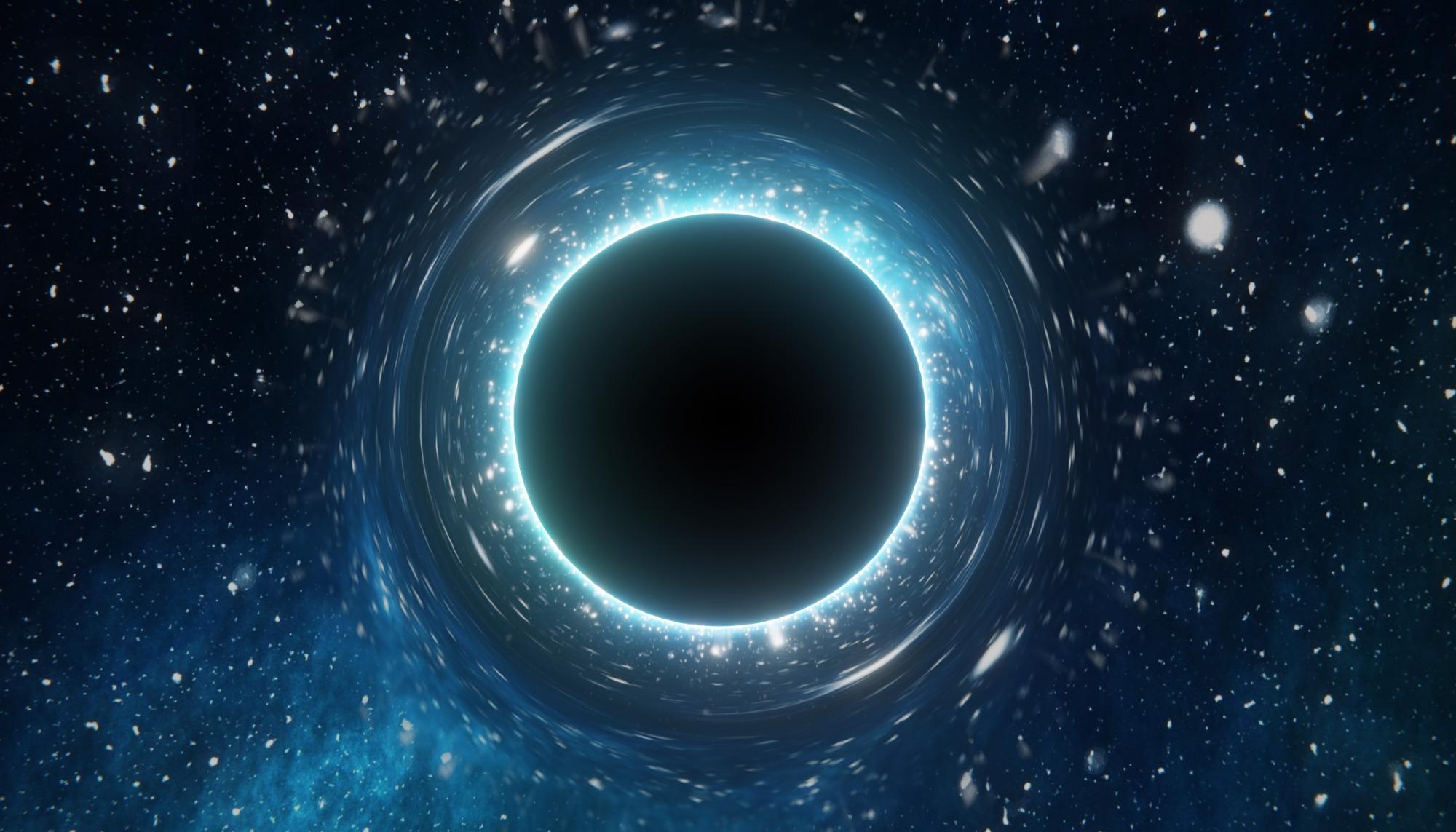One of the universe’s most enthralling mysteries is the existence of black holes. Nothing can pass through a black hole, not even light. In nearly every galaxy, there is a supermassive black hole that is millions to billions of times more huge than the sun. Identifying black holes and how they become supermassive could shed more light on the universe’s progression.
 An artist’s interpretation of a black hole. Image Credit: Brookhaven National Laboratory
An artist’s interpretation of a black hole. Image Credit: Brookhaven National Laboratory
Three scientists at the United States Department of Energy’s (DOE) Brookhaven National Laboratory recently created a model to describe the emergence of supermassive black holes, as well as the characteristics of another phenomenon: dark matter.
Theoretical physicists Hooman Davoudiasl, Peter Denton, and Julia Gehrlein define a cosmological phase transition that helped facilitate the creation of supermassive black holes in a dark field of the universe. The study was published in a paper Physical Review Letters.
A cosmological phase transformation is analogous to a more common type of phase transition: boiling water. When water hits the ideal temperature, it explodes into bubbles and vapor. Consider how that process would play out in a primitive state of matter. Then, reverse the process to create a cooling effect and intensify it to the scale of the universe.
Before galaxies existed, the universe was hot and dense, and that is well established. How the universe cooled down to what we observe today is a matter of interest because we don’t have experimental data describing how that happened. We can predict what happened with the known particles because they interact often. But what if there are not-yet-known particles out there performing differently?
Peter Denton, Theoretical Physicist, Brookhaven National Laboratory
To address this question, the Brookhaven group created a model of a dark sector of the universe crowded with yet-to-be-discovered particles that rarely interact. Ultralight dark matter, which is expected to be 28 orders of magnitude lighter than a proton, could be among such particles. Although dark matter has never been observed directly, scientists believe it accounts for the majority of the universe’s matter relying on gravitational forces.
The frequency of interactions between known particles suggests matter, as we know it, would not have collapsed into black holes very efficiently. But, if there was a dark sector with ultralight dark matter, the early universe might have had just the right conditions for a very efficient form of collapse.
Peter Denton, Theoretical Physicist, Brookhaven National Laboratory
Recent observations imply that supermassive black holes formed much earlier in the universe than previously believed by scientists. This discovery tends to leave little time to explain the development of supermassive black holes.
Black holes gain mass primarily through two mechanisms, according to physicists. One method is called accretion, and it occurs when matter, mostly dust, falls into black holes. However, there is a limit to the rate at which matter can accumulate in black holes via accretion.
The second way is through galactic collisions, throughout which two black holes can integrate, however, galaxies were just beginning to form in the early universe. As a result, physicists have been perplexed as to how these ancient cosmological wonders evolved so massively and rapidly. The missing piece could very well be ultralight dark matter particles.
We theorized how particles in the dark sector could undergo a phase transition that enables matter to very efficiently collapse into black holes. When the temperature of the universe is just right, the pressure can suddenly drop to a very low level, allowing gravity to take over and matter to collapse. Our understanding of known particles indicates that this process wouldn’t normally happen.
Peter Denton, Theoretical Physicist, Brookhaven National Laboratory
Even for something as remarkable as the universe, such a phase transition would be a devastating event.
“These collapses are a big deal. They emit gravitational waves. Those waves have a characteristic shape, so we make a prediction for that signal and its expected frequency range,” Denton added.
Current gravitational wave experiments are insufficiently sensitive to verify the theory, but additional studies may be able to identify signals of those waves. Based on the characteristic shape of the waves, scientists could then narrow in on the specifics of supermassive black hole emergence. Brookhaven theorists will continue to review new information and tweak their model until then.
The DOE Office of Science provided funding for this research.
Journal Reference:
Davoudiasl, H., et al. (2022) Supermassive Black Holes, Ultralight Dark Matter, and Gravitational Waves from a First Order Phase Transition. Physical Review Letters. doi.org/10.1103/PhysRevLett.128.081101.